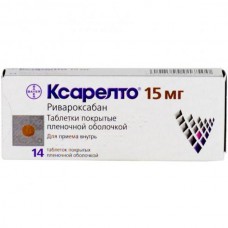Anticoagulants
Blood thinners basically inhibit the appearance of fibrin; they prevent thrombosis, contribute to stopping the growth of existing blood clots, enhance the effects of blood clots in the endogenous fibrinolytic enzymes.
Anticoagulants are divided into 2 groups: a) direct anticoagulants — quick action (heparin sodium, nadroparin calcium, enoxaparin sodium, etc.), efficient in vitro and in vivo; b) antiakoagulyanty indirect (vitamin K antagonists) — long-acting (warfarin, phenindione, acenocoumarol, etc.), are in vivo only after a latent period.
The anticoagulant effect of heparin is associated with a direct effect on the blood clotting system due to the formation of complexes with many of the coagulation factors and is manifested in the inhibition of I, II and III coagulation phases. The heparin is activated only in the presence of antithrombin III.
Anticoagulants of indirect action — derived oksikumarina, indandiona, competitive inhibit reductase of vitamin K than inhibit activation of the latter in the body and stops the synthesis of K-vitaminzawisimah plasma hemostasis factors II, VII, IX, X.



